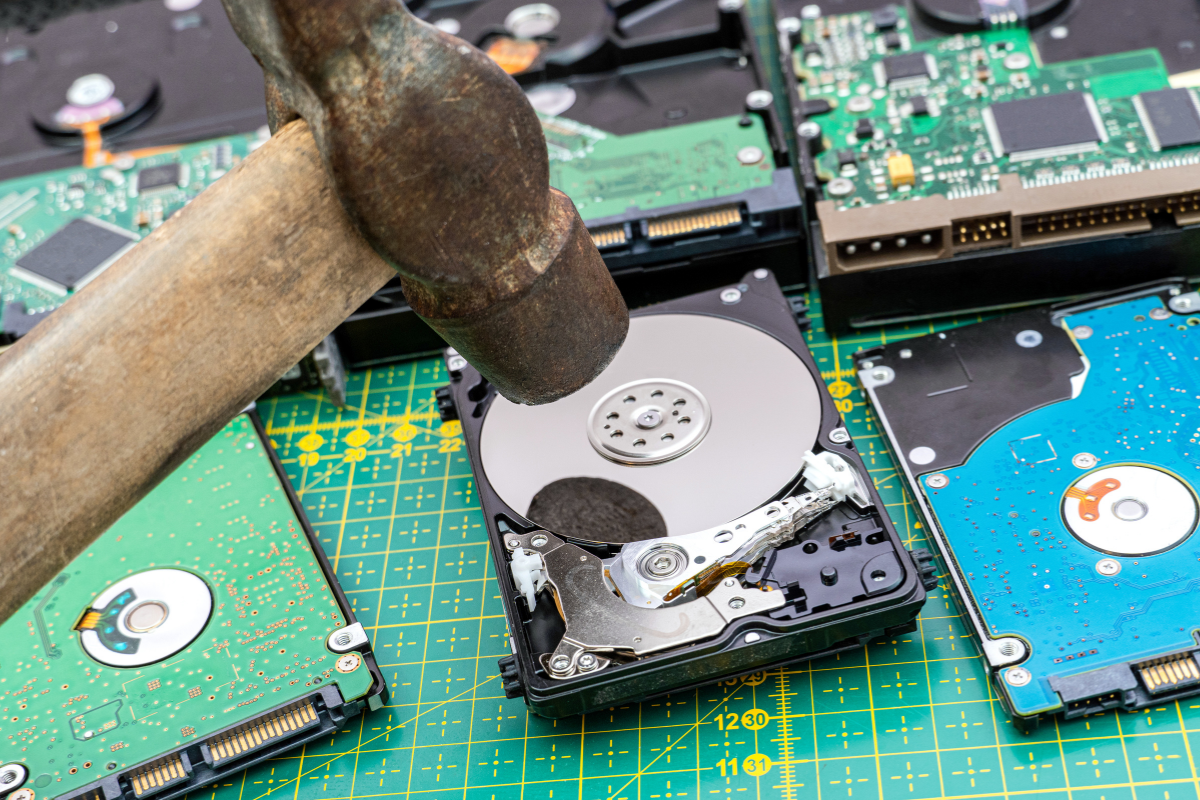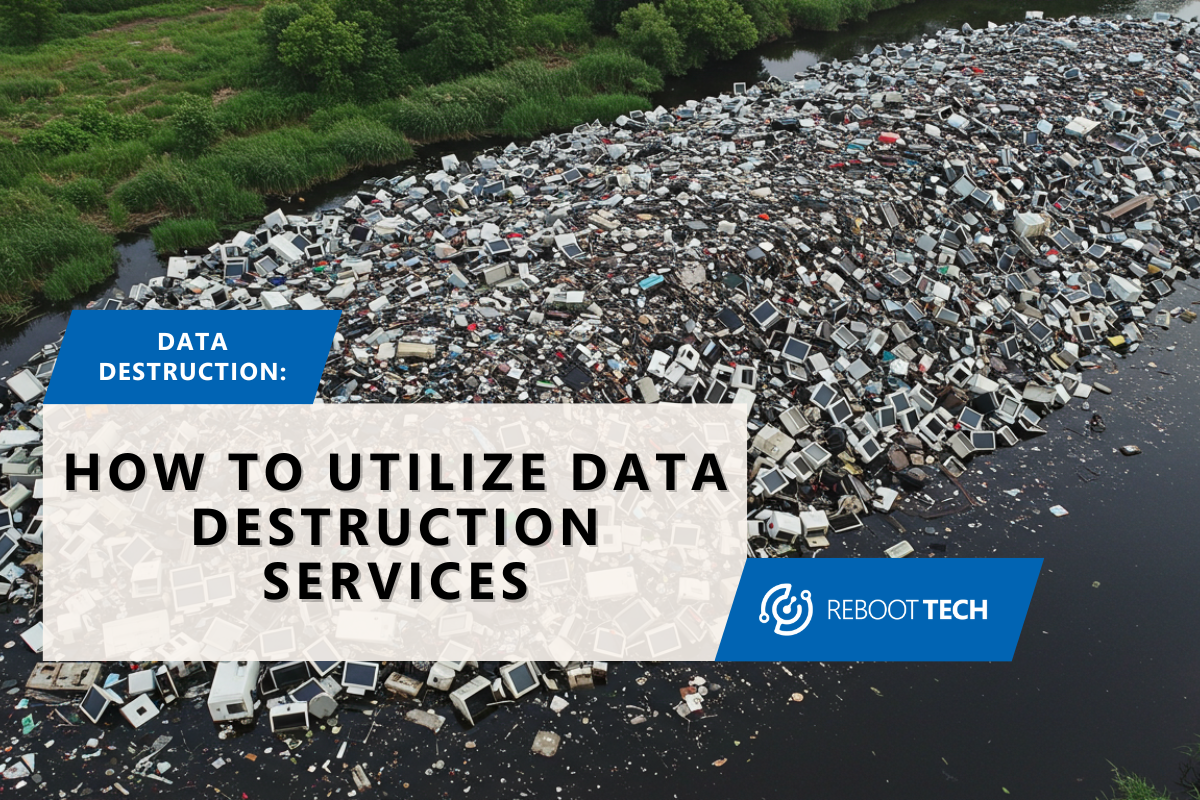
Optimizing Your ITAD Process with 4 Easy Steps
The proper management and disposition of IT assets have become essential for businesses looking to stay competitive, compliant, and save money. IT Asset Disposition (ITAD) is a critical component of this process, encompassing the secure and responsible disposal of end-of-life IT equipment.
This process and service have become more and more necessary as our technology keeps evolving. By optimizing the ITAD process, businesses can minimize risk, maximize value, and contribute to sustainability efforts. In this blog, we’ll go into how to streamline your ITAD process in three different ways.
The Need for IT Asset Disposition
IT Asset Disposition (ITAD) means safely getting rid of old IT equipment. The main goals are data security, environmental care, and following regulations. With a trusted ITAD provider, businesses can be sure their old IT assets are handled safely and responsibly.
As businesses update their IT systems and replace old equipment, the importance of proper IT asset disposition grows. ITAD means managing retired IT assets, including wiping data, recycling, and disposing of them properly. By improving the ITAD process, businesses can reduce security risks, follow regulations, and get the most out of their IT investments.
Establish Clear Policies
The first step is pretty simple but quite necessary, and that is to establish clear policies. These policies should outline objectives, responsibilities, and procedures for handling your electronics. It’s also crucial that the key stakeholders are kept in the loop about this process. Clear policies help keep things organized and lower any potential risks.
Once the policies are established, make sure to communicate everything to people in the organization. For new employees, make sure they’re trained on how to handle certain procedures and emphasize the compliances that your business needs to follow.
Other policies include data security, chain of custody, compliances, service level agreements and more. Your ITAD partner should be able to help you out with all of these, but make sure to stay informed and make sure everything is being communicated.

Maintain an Inventory List and Budget

This means listing all retired equipment like computers, servers, and other electronic equipment that you may have. That way, when you dispose of it, you’re able to keep track of everything easily. A detailed inventory list also helps organizations keep track of their ITAD project cost, some financial assets that show their value, and information security requirements.
After your policies are clearly laid out, make sure to create an inventory list if you don’t already have one. After that, make a budget and be able to maintain those two properly. To improve the ITAD process, start by checking all IT assets.
Once everything is documented and a detailed inventory list is made, it can now free you up to make an accurate financial return document. Making a complete scope of the budget will make sure your business stays on track instead of letting it become an afterthought where you lose money.
Data Sanitization
We’re sure almost every business has concerns about keeping their data safe and secure. However, many businesses do not actually have proper ways to protect their data. In fact, a recent study by Foundry and Iron Mountain says that 45% of IT leaders who were surveyed stated that they have concerns about managing and tracking IT assets throughout their life cycles. About half of those leaders also have concerns about sensitive data being accessed by hackers.
Over 40% of those surveyed leaders didn’t even have a formal ITAD strategy despite all their concerns. You might also think you’re not at too big of a risk if you’re a small business. This is a common misconception by some, that only big corporations are at risk of these things, and that hackers won’t come for smaller businesses. The 2023 Business Impact Report revealed that 73% of small business owners experienced cyber attacks.
This is where data sanitization comes into play. Before getting rid of IT equipment, businesses must make sure all sensitive data is erased from electronic devices. This means using certified methods to permanently delete data, so it can’t be recovered.

There are a few different ways of data sanitation, these include Physical destruction, purging, and clearing the data.
- Clearing: A process of overwriting storage media with some non-sensitive data, which makes sure that that data can’t be accessed using normal software.
- Purging: Renders data so software and hardware-based data recovery doesn’t work. It’s a more thorough version of clearing and is usually more effective on storage devices such as solid-state drives (SSDs).
- Physical Destruction: This makes sure that data is completely shredded into small particles so that any piece of data is completely gone. Physically destroying data is usually used for highly sensitive data.

When choosing a data destruction method, focus on what you need, and the sensitivity of the data. They’re also not exclusive, and you can choose to use a combination of the methods. By focusing on data cleaning, businesses can keep personal information safe and reduce the chance of data breaches.
Responsible Recycling
After completing data sanitization, the next step is to dispose of old IT assets properly. At first glance, you may not see that as a necessity for your business, but simply the ethical thing to do for the environment. However, both of these are the case as there are many state regulations that require businesses to properly dispose of their electronics. If these mandates aren’t met, businesses can be met with a hefty fine.
Instead of throwing equipment in the trash, businesses should use certified e-waste recycling companies. These companies focus on eco-friendly disposal methods, ensuring that IT equipment is recycled or reused whenever feasible. Opting for responsible recycling helps businesses reduce their environmental impact and promote sustainability.

Utilizing These Steps
To improve the ITAD process, businesses should take these four steps in mind. Moving forward, businesses should prioritize clear ITAD policies, objectives and other requirements. Communication is crucial in this process, but if you choose a good ITAD provider, then they should be able to take care of all the hassles for you.
When optimizing your ITAD process, your data can be better protected, help out the environment by eliminating e-waste, keep up with compliances and even save money for your business. Reboot Tech offers ITAD and electronics recycling services as well, so if you’re interested, please give us a call at (909)-297-1355.





